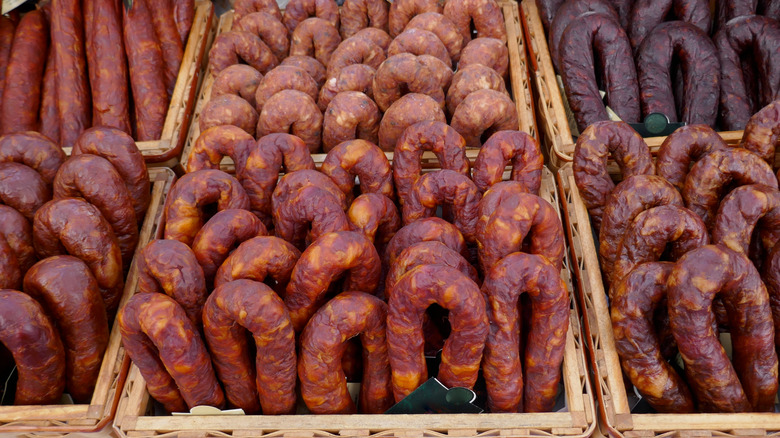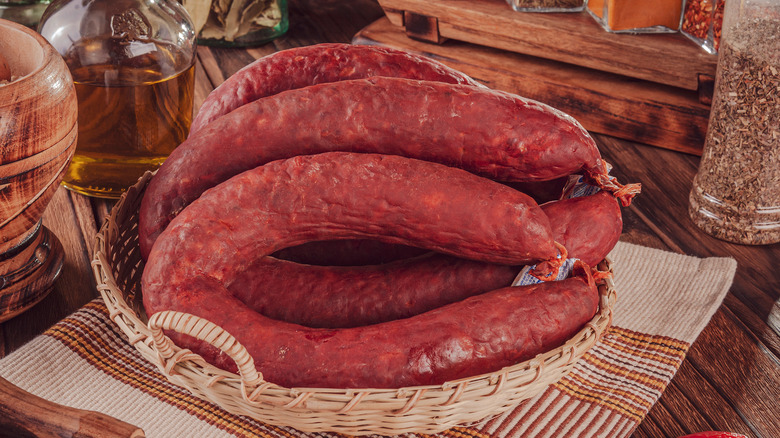The Real Difference Between Chorizo And Linguiça
These delicious, flavorful, and spicy sausages are often confused. Before assuming that one can be substituted for another, we're taking a closer look at the real differences between chorizo and linguiça.
It's no wonder people get confused with chorizo: There are three kinds to choose from! What they have in common is they're all made with pork, and have a lot of flavor thanks to generous seasoning blends. According to Epicurious, Spanish chorizo is a red, smoke-cured sausage, flavored with garlic and a whole lot of paprika. In fact, Leite's Culinaria learned that paprika can make up as much as 20 percent of Spanish chorizo by weight. Taste of Home shares that it can be sliced and eaten as is or lightly cooked first.
Mexican chorizo is a raw, ground sausage, and so must be cooked before eating. Though Mexican chorizo may be sold in casings, the meat is removed from them before cooking. Leite's Culinaria shares that Mexican chorizo gets its flavor primarily from garlic and chili powder. Epicurious notes that Mexican chorizo is often spicy.
Then, there's chouriço from Portugal. In an interview with Sara Moulton, "The Food of Portugal" author Jean Anderson shares that chouriço is very similar to Spanish chorizo, with a similar, deep red hue. It's very juicy and full of garlic and paprika. Anderson says that chouriços are popular in Lisbon eateries, and are often cooked flambé-style by diners right at their tables.
What distinguishes linguiça from chorizo
The good news is that, unlike chorizo, there is only one linguiça. On The Gas shares that the word lingua is Portuguese for "tongue." Because of this, it's often assumed that linguiça is made with pig's tongue, but the name actually refers to the long and slender shape of the sausage.
Linguiça is very similar to chouriço. It's a pork sausage that gets its flavor from lots of garlic and a smoke curing. It has paprika like Spanish chorizo, but tends to have a milder flavor. It can include spices like oregano and cumin, and a vinegar brining stage either before it goes into casings or after. Traditional dishes with linguiça include the massive franceshina sandwich, a Portuguese bread like this one from Leite's Culinaria, and a hearty hash as shared by On The Gas.
If you've been confused between linguiça and chouriço in the past, you're not alone. Gaspar's, known for its Portuguese sausages, notes that its chouriço uses the same meat and spice blends as its linguiça, but has "more of a kick." Another company, Mello's Finest, says the difference is that chouriço is made with beef casings — however, Leite's Culinaria claims both sausages are traditionally made with pork casings. Factor in the hundreds of family recipes for both sausages that have been handed down through generations, and it's likely the debate (and confusion) will go on for years to come.

